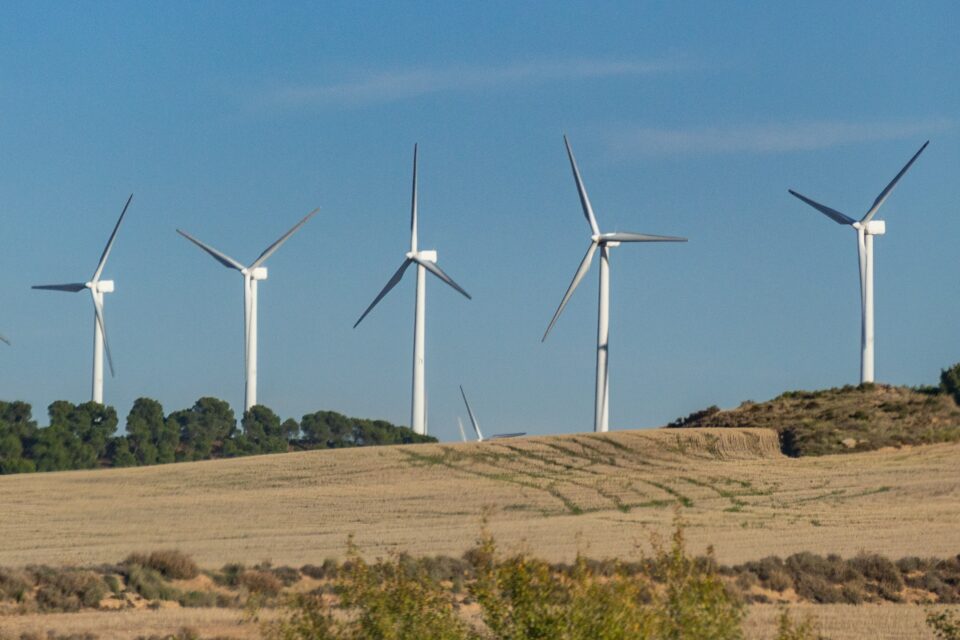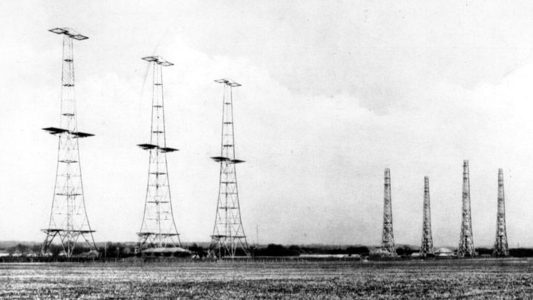
The layout design problem of wind farms is an excellent example of how using prescriptive analytics can make the most of green transition initiatives.
The opening of new wind farms and installing wind turbines with greater capacity have made wind energy the technology with the most remarkable installed capacity at the national level. In parallel to the development of these machines, the different aspects of the design process of wind farms have also been studied, to ensure that the actual electricity generation of these installations during their operation is as close as possible to their nominal value.
Among all design decisions, optimising the layout of wind farms is about finding the optimal location of all wind turbines in the farm to maximise their total yield.
The Wind Wake Effect
Wind turbines are often grouped into wind farms to take advantage of economies of scale, such as lower installation and maintenance costs. However, the clustering of the turbines close to each other leads to a reduction in power output due to the generation of wind wakes.
As the wind passes through, it causes the wind turbine blades to move while the turbines convert it into electrical energy. However, this also generates wake turbulence, which propagates in the wind direction and affects other wind turbines, reducing their efficiency. The effects of wakes constitute a considerable loss of power during the operational phase, so it is essential to anticipate them at the design stage.
For simplicity, wind farms have traditionally been designed with a grid layout, placing wind turbines in rows spaced far enough apart to reduce wake effects. However, designs with an irregular layout have demonstrated reduced wake losses and higher energy yields, although these layouts are not as easy to obtain.

Design Process
Today, designing these parks requires the collaboration of multiple teams, who analyse and incorporate numerous factors into their decision-making. The most important factors are:
- Measurements and wind condition estimations.
- Technical characteristics of wind turbines.
- Land or seabed topography (depending on whether onshore or offshore) and civil or environmental constraints on surface availability.
- Network connection and electricity infrastructure requirements.
- Wake modelling and calculation of energy losses.
Generally, layouts are developed on the ground of the available wind resources, locating the wind turbines where the potential for electricity generation is maximised. This solution must then be manually reviewed to ensure that all constraints are met.
The rest of the teams involved in the project, such as those responsible for the design of the electrical system or the civil works of the wind farm, may propose modifications to the solution reached if it is not viable or efficient. For example, in onshore wind farms, the best wind conditions occur where the terrain is higher and the wind encounters fewer obstacles. The design team may initially propose to site the wind turbines in these locations. However, when considering civil works and vehicle access to it, iterations on the solution may be required, forcing a reduction of the generation potential in more accessible or less steep locations.
Implementation of Prescriptive Analytics
Facing this opportunity, different techniques of prescriptive analytics, such as mathematical optimisation or metaheuristic algorithms, have been applied to this problem with two different approaches:
- Maximise electricity generation from a known number of wind turbines. In this case, wind farm power has already been set, so the objective is to determine the optimal location of all wind turbines and to minimise their interference.
- A further step is to approach this problem to maximise the return on investment. This means incorporating the installation and operating costs of the wind farm into the decision tool, so that the proposed solution takes into account the necessary investment per wind turbine that could be installed and, with its location, its expected generation.
In addition, the main challenges facing these techniques are:
- Modelling the effect of the wakes, involving complex non-linear formulae
- The scale of the problem, especially for offshore wind farms, can lead to significant solution spaces and resulting long resolution times.
Since they have been in use, these techniques have proven successful. In addition, the process is much more agile than when done manually, either when generating the layout of parks to be built or when comparing the solution with the configuration of existing parks.
The investment required for wind farms is high and losses from the wake can be as much as 10-15% of energy production. The solutions achieved with these tools can, on the map, make a big difference to the manually generated layout. However, what is important are the differences reached in the efficiency of the fleet as a result. Even the smallest of these have a huge impact and can translate into millions of euros.
Other Design Process Decisions
The energy losses of the electrical installation are not negligible, although the most notable losses are due to the effect of the wakes. After obtaining the layout of the wind turbines, it is necessary to design the wiring connections between the wind turbines and the network.
The sizing and design of the cable network is also a decision that can be approached with prescriptive analytics, to minimise installation costs and electrical losses during operation in the wind farm.
Similarly, the design decision for internal layouts in onshore wind farms can be approached. This problem entails designing the layout of the network of roads to be built between the wind turbines for installation and maintenance while complying with civil constraints and minimising total construction costs.
Operations research has a wide variety of techniques that can be applied in the cases mentioned in this article. For all these decisions, mathematical models can be built to represent the reality and complexity of these problems. With the data used to design wind farms today, solutions from these models will be better and faster to achieve than those obtained when different teams work separately and manually.



